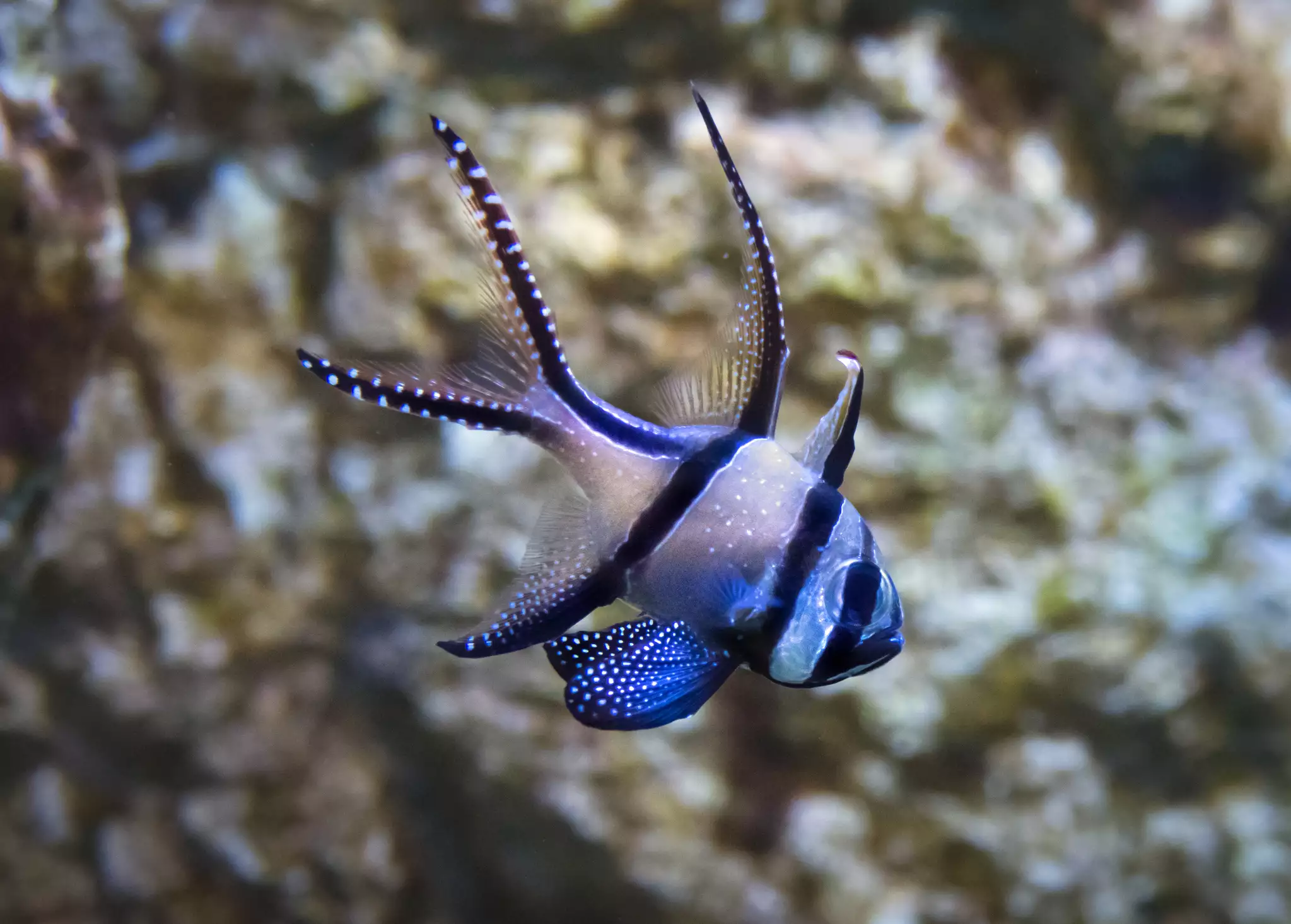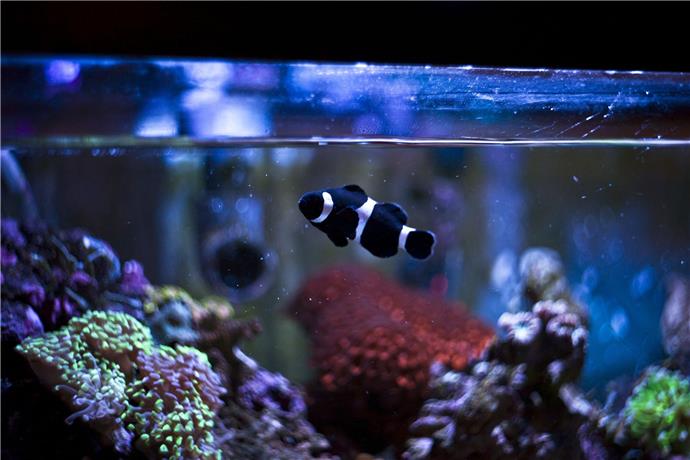There are many important factors to consider when choosing residents for a saltwater tank. Depending on how you want your aquarium to look or how it is already set up, you should carefully consider which fish to add to your aquarium. While mixing predators and prey isn’t the only consideration, you may need to make some changes to your tank or plan ahead so that all fish are comfortable in their new environment.
Ideal Tank clauses
All fish, regardless of the environment, need a home with good water quality and good nutrition. However, not all species are made to live in the same house. Before bringing a fish home, or before buying an aquarium, research should be done to find out which fish you prefer in your ideal setup.
area
Some species of fish want a bunch of brothers close by, while other species need space to hold their own. Certain species may have different requirements if they are caught or bred in captivity. Clownfish are known to live in a herd and to share their space well. Damselfish must have their own den or they will not thrive in your aquarium. In the wild, these fish are known to attack divers who venture too close to their rocky homes. The country lady sees herself in the diver’s goggles and accusations! This requirement is completely species-dependent.
And territory isn’t just about having a place to hide and protect yourself. Sometimes fish just need freedom of movement! That cute little golden puffer that you added to a 60 gallon tank will eventually grow into a giant over 1 ‘long that needs more than 150 gallons to feed itself. Never put a fish in a tank and say to yourself, “I’ll get a bigger tank later,” because most people don’t. Plan ahead or don’t add that fish!
Water flow
All fish are structurally not created equal or prefer the same environment. If fish are in a tank with improper water flow, there is a risk of overexertion or poor water quality. Depending on the mix of species, you may find yourself drawing a fine line between too much and too little current.
Many saltwater fish such as cones and triggerfish can maneuver around the aquarium with ease and have no problem swimming against a current. Some even enjoy the exercise and you can make feeding time less crowded with a powerhead blowing the food evenly through. However, other less agile fish, such as pine fish and blennies, cannot swim against a strong current for long periods of time. Sure, they can freak out at feeding time, but they spend most of their time in their ledges or buried in the substrate. The water flow must be directed over the entire tank environment to ensure good water quality. Be aware, however, that less water flow may be required in some places.
Any decor that you add to your aquarium will affect the movement of water in your aquarium. Smaller and nano saltwater tanks are particularly susceptible to high water flow as the reverberation bounces back on the sides of the tank. An easy way to check the flow of your aquarium is to add a few small, neutral floating tub toys or a ping pong ball filled with water and see where they land in the tank. They shouldn’t gain significant momentum and shouldn’t end up in the same place every time.
Home page
Some fish like to stay in their territory to hide in different places. Without a place to settle in, they become stressed and likely to die of starvation and secondary infections. Some species, like blennies, have ledges with shallow caves and maiden fish like small caves hidden deep inside. The substrate can be a cover for species such as pine fish. They need soft sand, not hard gravel, as they will move it to build their underground homes.
Specialty housing
The biggest proponent of living together with specialized housing is clownfish. There are several types of clownfish, some of which prefer certain types of anemones to perch here. This symbiotic partnership keeps the anemones free of particles and pathogens, while the clownfish have a safe home to raise their young and hide from predators.
Keeping anemones and other soft corals in an aquarium has its own list of requirements and parameters. Take these into account when planning your aquarium. You need certain light parameters and areas with low water flow so as not to be tossed off the rocks. And just because they’re seated doesn’t mean they won’t hike if they don’t like their designated spot!
breed
If you want to cook more fish, you need even more space! Breeding pairs need to have a safe place to keep their eggs, either in a cave, near a coral, or on the sides of their tank. Some parents will even keep the eggs in their mouth until the fry hatch, but they themselves will be withdrawn. Some species will viciously defend their young while others take a more casual approach. And other species can’t wait to have a delicious egg snack!
Make sure to do your research before starting a breeding program. Remember that if your aquarium is not big enough, you will need to find a new home for your new fish.
The ideal salt water mixing tank
What does your tank look like after making the above considerations and putting them all together? Is it too big for what you planned? What kind of decor and substrate do you need to buy? Are you sure you want to have a breeding pair in this shell that is already full of size ??
Usually the biggest consideration for a mixed species tank is size. No matter what your setup looks like or what fish it contains, a larger aquarium with a larger volume of water is always the better way to go. More water provides additional cushioning in the event of maintenance errors. We know you are doing your best, but there will always come a time when something shows up and your tank just slips out of your head. That extra volume will take care of your fish until you come back.
If your tank size has gotten too big to manage, reassess your priorities. Maybe you should look at smaller fish that don’t have wide areas? Or fish that don’t need a network of caves to mess up your water flow? If all you have to do is have fish that require a huge tank and don’t have enough space, signing up to your local aquarium instead of forcing a situation that can’t thrive.
Gold-Star-Panzerkameraden
These lazy fish are very popular in smaller areas and get along with many other species.
Banggai or Kauderns Cardinalfish (Pterapogon kauderni)
These lazy fish swim slower and can enjoy a wide variety of habitats. You can go swimming in their caves at night and during the day. They are easily bred in captivity and enjoy a varied diet.

Neon Blue Grundel (Elactinus oceanops)
Don’t fire this fish because of its small size! The electric blue color makes this goby a lively addition to any tank. They don’t require a lot of water and can accommodate tiny burrows that are ignored by larger fish. They are well suited as a single fish or in pairs.
Ocellaris Anemonenfisch (Amphiprion ocellaris)
There are many different types of clownfish that are suitable for many reef aquariums. These lazy reef fish like having an anemone to call home, but get on well with many species of fish. When clownfish are born they are all male, and the largest fish in a group becomes female.
Incompatible tankmates
These fish do not play well with others and need a lot of water. Careful planning is required to bring these fish home.
Clown triggerfish (Balistoides conspicillum)
Triggerfish, which must hold at least 300 gallons, are well-known live rock and coral nibbles. Their beak can easily crush any rocks that you’ve carefully arranged, and they need similarly sized, aggressive tankmates.
Goldfinch Lipfish (Thalassoma hebraicum)
There are different temperaments across the wrasse family, but the lively golden bar wrasse, with its distinctive golden bar behind the lid, is one of the most aggressive. These fish require a tank of 125 gallons and up, are very territorial, and do not take new supplements well. If you want to add them to your aquarium add them LAST.
Schwarzer Katzenhai (Chiloscyllium punctatum)
All sharks and rays require a lot of water. Although some species are not very aggressive, they are more sensitive to poor water quality and unsuitable tank conditions.
Overall, there is no one right way to set up an aquarium. Before buying anything, do your research to make sure all species are thriving in their new homes.

